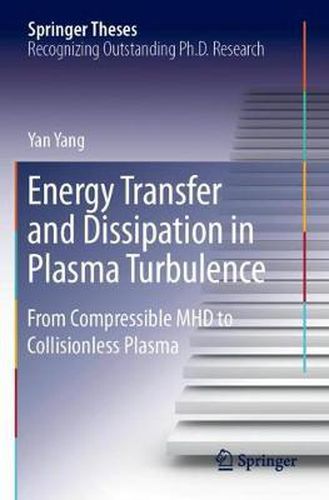Readings Newsletter
Become a Readings Member to make your shopping experience even easier.
Sign in or sign up for free!
You’re not far away from qualifying for FREE standard shipping within Australia
You’ve qualified for FREE standard shipping within Australia
The cart is loading…






This book revisits the long-standing puzzle of cross-scale energy transfer and dissipation in plasma turbulence and introduces new perspectives based on both magnetohydrodynamic (MHD) and Vlasov models. The classical energy cascade scenario is key in explaining the heating of corona and solar wind. By employing a high-resolution hybrid (compact finite difference & WENO) scheme, the book studies the features of compressible MHD cascade in detail, for example, in order to approximate a real plasma cascade as Kolmogorov-like and to understand features that go beyond the usual simplified theories based on incompressible models. When approaching kinetic scales where plasma effects must be considered, it uses an elementary analysis of the Vlasov-Maxwell equations to help identify the channels through which energy transfer must be dissipated. In addition, it shows that the pressure-strain interaction is of great significance in producing internal energy. This analysis, in contrast to many other recent studies, does not make assumptions about wave-modes, instability or other specific mechanisms responsible for the dynamics - the results are direct consequences of the Vlasov-Maxwell system of equations. This is an important step toward understanding dissipation in turbulent collisionless plasma in space and astrophysics.
$9.00 standard shipping within Australia
FREE standard shipping within Australia for orders over $100.00
Express & International shipping calculated at checkout
This book revisits the long-standing puzzle of cross-scale energy transfer and dissipation in plasma turbulence and introduces new perspectives based on both magnetohydrodynamic (MHD) and Vlasov models. The classical energy cascade scenario is key in explaining the heating of corona and solar wind. By employing a high-resolution hybrid (compact finite difference & WENO) scheme, the book studies the features of compressible MHD cascade in detail, for example, in order to approximate a real plasma cascade as Kolmogorov-like and to understand features that go beyond the usual simplified theories based on incompressible models. When approaching kinetic scales where plasma effects must be considered, it uses an elementary analysis of the Vlasov-Maxwell equations to help identify the channels through which energy transfer must be dissipated. In addition, it shows that the pressure-strain interaction is of great significance in producing internal energy. This analysis, in contrast to many other recent studies, does not make assumptions about wave-modes, instability or other specific mechanisms responsible for the dynamics - the results are direct consequences of the Vlasov-Maxwell system of equations. This is an important step toward understanding dissipation in turbulent collisionless plasma in space and astrophysics.